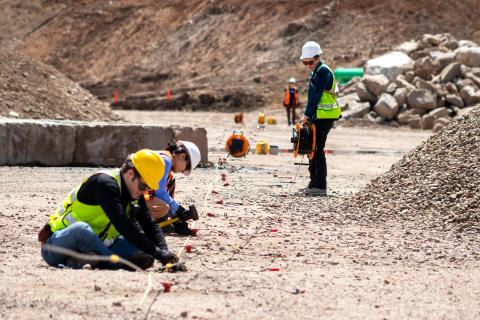All Categories
Featured
Table of Contents
Gravity Geophysical Survey Method in Alexander Heights WA 2021

They likewise research modifications in its resources to provide guidance in conference human demands, such as for water, and to predict geological dangers and dangers. Geoscientists use a variety of tools in their work. In the field, they may utilize a hammer and chisel to gather rock samples or ground-penetrating radar equipment to browse for minerals.
They also might use remote picking up devices to collect information, along with geographic info systems (GIS) and modeling software to evaluate the information collected. Geoscientists might monitor the work of technicians and coordinate work with other scientists, both in the field and in the laboratory. As geological difficulties increase, geoscientists might opt to work as generalists - Airborne Geophysical Survey in Embleton Western Australia 2022.
The following are examples of types of geoscientists: geologists study how effects of human activity, such as pollution and waste management, impact the quality of the Earth's air, soil, and water. They also may work to fix problems associated with natural risks, such as flooding and disintegration. study the products, procedures, and history of the Earth.
Geophysical Surveying And Mapping Services (Geology ... in Daglish Aus 2023
There are subgroups of geologists too, such as stratigraphers, who study stratified rock, and mineralogists, who study the structure and composition of minerals. study the movement and flow of ocean waters; the physical and chemical homes of the oceans; and the methods these homes impact coastal areas, environment, and weather condition.
Latest Posts
Geophysical Survey in Jandakot Australia 2020
Geophysics Definition & Meaning in Roleystone Oz 2021
Geophysical Survey - Explore The Seafloor in Kinross WA 2021